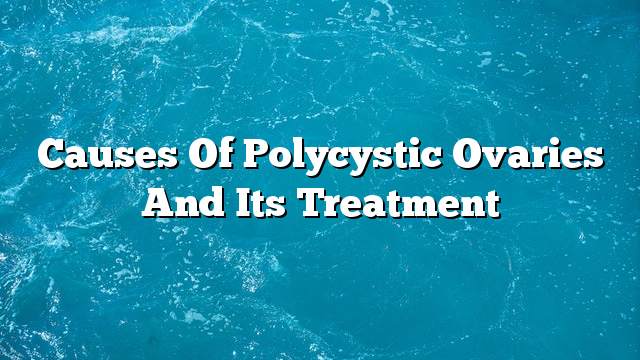Polycystic ovaries are the most common diseases in women of all ages, and are meant to be enlarged in the ovaries due to the presence of small cones inside the ovaries, accompanied by shortness or weakness of ovulation and menstrual disorders. For further clarification, ovarian sac is a pocket filled with fluid forming on the ovary. Ovary in the gynecological system. The risk lies in blocking the functions of the ovaries, which are manifested in the production of special hormones necessary to maintain the regularity of ovulation dates.
There are several symptoms that precede PCOS, including menstrual cycle disorders, weight gain, high skin fat, delayed pregnancy or inability to conceive, high blood pressure, high blood sugar, excessive hair growth, and acne Nausea, vomiting and pain in sexual practices.
If the symptoms and complications of polycystic ovary are known and manifest, the causes leading to them remain varied and are mainly related to the hormones that make up women’s physiology. Among these reasons:
- Increase the hormone hormone stimulant hormones of the pituitary gland, which leads to the increase of the hormone activating the pulse of the required ratio, resulting in more irritation of the ovary and lead to the emergence of more than a small link
- Increased male hormones that transform inside the ovaries where they do not respond to pituitary hormones appropriately as in normal ovaries
- The presence of resistance to the hormone insulin, which means the lack of insulin ability to introduce the clique of cells
- Increased weight in turn increases the risk of polycystic ovaries so that half of women with polycystic ovaries are estimated to have obesity.
There are other sub-causes, such as weak women’s immune system and environmental pollution, as well as some dietary habits in women and other causes associated with heredity.
There are ways and means to reduce and reduce the incidence of this disease, such as exercising, eating fresh vegetables, reducing the consumption of dairy products, eating fish, drinking lots of water and fruit juice. Natural.
The treatment is focused mainly on the patient itself, most of the patients suffer from obesity, which necessitates them to lose weight either with the drugs allocated to it or follow a natural diet, especially after consultation with a specialist in nutrition. Treatment with drugs that depend on the condition of the patient may be such as birth control and birth control drugs, low-risk drugs for menopause or drugs that interfere with the function of estrogen. Surgical treatment is also used as the last solution to be used in the case of medical treatment, where it is necessary to remove large bags and bags that cause serious symptoms.
